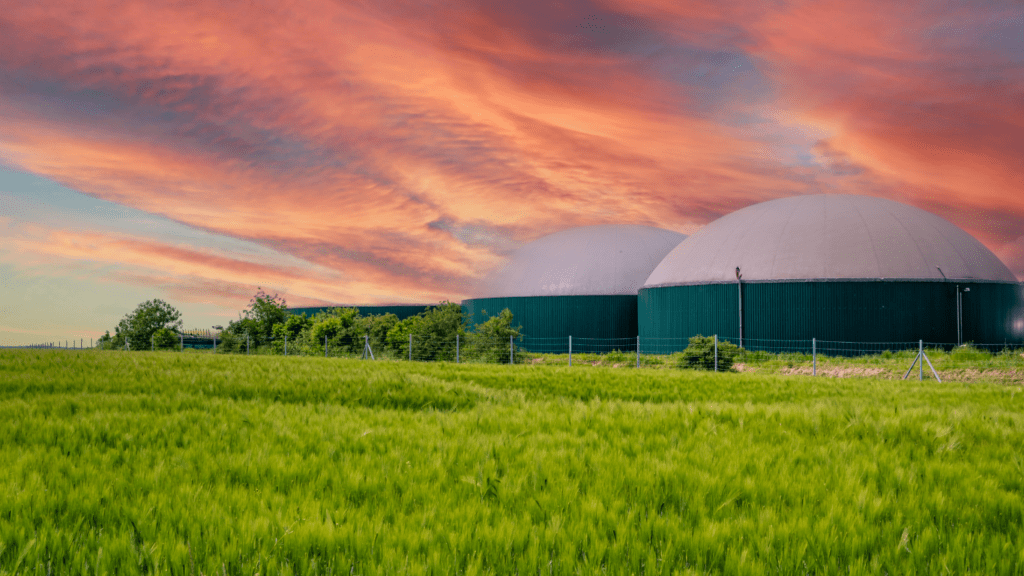Understanding Renewable Energy in Agriculture
Renewable energy is transforming the agricultural sector. It’s essential to understand the types of renewable energy sources and how they integrate into farm operations.
Types of Renewable Energy Sources
Various renewable energy sources power farms.
These include:
- Solar Energy: Solar panels on barns, fields, or rooftops convert sunlight into electricity. This energy powers irrigation systems, lighting, and machinery. For example, farms use solar pumps for efficient water distribution.
- Wind Energy: Wind turbines installed on farms generate electricity. Wind energy powers grain dryers and milking machines. Farms in windy regions, like the Midwest, harness this resource effectively.
- Bioenergy: Biomass and biogas from crop waste and animal manure produce bioenergy. This energy source heats greenhouses and powers equipment. For instance, some farms use anaerobic digesters to convert manure into biogas.
- Hydropower: Small-scale hydropower systems use flowing water from nearby rivers or streams. Hydropower supports fish farming and crop irrigation. Farms near water bodies utilize this renewable source.
Integration of Renewable Energy in Farms
Integrating renewable energy into farms enhances efficiency and sustainability.
Specific methods include:
- Energy Audit and Planning: Conducting energy audits helps identify suitable renewable energy sources. This step ensures that farms optimize placement and utilization.
- Hybrid Systems: Combining multiple renewable energy sources creates hybrid systems. For example, a farm might use both solar and wind energy to maximize power generation.
- Energy Storage Solutions: Batteries and other energy storage systems store excess energy. Stored energy tackles power outages and maintains farm operations during non-peak production times.
- Smart Technology Integration: Smart grids and IoT devices monitor and control energy usage. These technologies help in automating irrigation systems, adjusting lighting, and managing equipment efficiently.
By leveraging these renewable energy sources and integration methods, farms achieve higher productivity and sustainability. Renewable energy not only reduces fossil fuel dependence but also ensures long-term economic benefits.
Benefits of Renewable Energy on Farm Productivity
Renewable energy significantly boosts farm productivity, fostering cost savings, enhanced crop yields, and environmental sustainability.
Cost Savings and Economic Benefits
Adopting renewable energy reduces operational costs. Solar panels, for example, lower electricity bills by powering irrigation systems.
Wind turbines generate electricity, decreasing reliance on grid power. Bioenergy from crop waste cuts heating costs for greenhouses. Such reductions in energy costs translate into economic benefits, freeing up capital for other farm improvements.
Enhanced Crop Yield and Quality
Renewable energy sources improve crop yield and quality. Consistent power from solar panels ensures reliable irrigation, promoting healthier plant growth.
Wind turbines assist in drying grains, preventing spoilage and ensuring higher quality produce. Additionally, bioenergy systems maintain optimal greenhouse temperatures, conducive to better crop yields. These enhancements in energy reliability lead to more productive agricultural outputs.
Sustainability and Environmental Impact
Renewable energy enhances sustainability and reduces environmental harm. Solar and wind energy minimize carbon emissions, curbing climate change impacts on agriculture.
Bioenergy utilizes crop waste, preventing pollution and promoting waste recycling. Hydropower supports conservation efforts by efficiently managing water resources. These practices not only benefit the environment but also ensure the long-term viability of farming operations.
Challenges and Limitations
Renewable energy can drastically impact farm productivity, but it comes with its own set of challenges. These limitations include financial, technological, and operational hurdles.
Initial Investment and Funding
One of the major challenges is the high initial investment. Renewable energy systems like solar panels and wind turbines demand substantial upfront costs.
Although long-term savings are significant, securing initial funding can be difficult. Access to grants and subsidies varies, and not all farmers qualify. For example, a farmer installing a solar irrigation system might need to invest around $10,000 to $25,000, making it a significant financial commitment.
Technological and Infrastructure Barriers
Technological barriers also exist. Not all farms have the infrastructure necessary to support renewable energy installations. Rural areas often lack access to advanced grid systems, making integration tough. For instance, a wind turbine requires consistent wind speeds and a stable grid connection to function efficiently.
Maintenance and Operational Issues
Maintenance and operational issues add another layer of complexity. Renewable energy systems need regular maintenance to perform optimally.
Solar panels must be cleaned periodically, and wind turbines require mechanical check-ups. Finding skilled technicians in rural areas can be a challenge. If solar panels accumulate dust, efficiency can drop by 20%, directly affecting energy production.
These challenges highlight the need for a balanced approach in adopting renewable energy, ensuring that the benefits outweigh the limitations.
Case Studies and Real-World Examples
Renewable energy’s impact on farm productivity shines through in various successful case studies. These examples highlight the potential benefits and practical lessons learned from real-world applications.
Successful Implementations
Solar-Powered Irrigation in India
In Maharashtra, India, farmers use solar panels to power water pumps for irrigation. This implementation reduced their dependency on unreliable grid electricity and diesel generators. The system provided consistent water supply, increasing crop yields by 20%.
Wind Energy in the United States
In Iowa, a family-owned farm installed wind turbines to generate electricity. The turbines produced 60% of the farm’s energy, significantly cutting electricity costs. The farm used savings for additional machinery, enhancing productivity.
Bioenergy in Belgium
A dairy farm in Flanders utilizes biogas from cow manure. The system generates sufficient energy to heat the farm’s buildings and power equipment. This approach reduced waste handling costs and provided a renewable energy source, improving the farm’s economic sustainability.
Hydropower in Vietnam
Small hydroelectric plants in Vietnam’s Mekong Delta support regional farms. These plants power irrigation systems, enabling farmers to cultivate rice and other crops more efficiently. This method decreased water logging and increased productivity.
Lessons Learned
Adaptation to Local Conditions
Real-world applications highlight the need to adapt renewable energy solutions to local conditions. For example, solar panels perform best in sunny areas while wind turbines require consistent wind speeds.
Economic Feasibility
Initial costs can deter adoption, but long-term savings often justify the investment. Securing funding through grants or subsidies can alleviate financial barriers, as shown in several case studies.
Maintenance and Training
Regular maintenance ensures systems operate efficiently. Training for farmers on system use and upkeep is crucial. In Belgium, the biogas system’s success hinged on proper management and timely maintenance.
Integrated Systems
Combining renewable energy sources can maximize benefits. Hybrid systems, like solar and wind energy, provide greater reliability and efficiency, exemplified by their implementation in different regions.
These cases underscore the transformative impact of renewable energy on farm productivity. They demonstrate practical benefits and highlight essential lessons for successful adoption.
Future Prospects and Innovations
Advancements in renewable energy promise even more benefits for farm productivity. Cutting-edge technologies and supportive policies continue to drive this transformation.
Emerging Technologies
New technologies enhance renewable energy’s role in farming. Precision agriculture integrates with solar power. For example, solar-powered drones monitor crop health. Smart grids and microgrids increase energy efficiency.
They ensure farms use energy effectively. Innovations in wind energy include smaller, more powerful turbines. Vertical-axis wind turbines fit better on farms, providing consistent energy without large footprints.
Bioenergy technologies now utilize more feedstock types. This includes agricultural residues and algae. Energy storage solutions, like advanced batteries, address intermittency issues. Farms store excess energy for use during low production periods, ensuring continuous power supply.
Policy and Regulatory Support
Supportive policies and regulations foster renewable adoption in agriculture. Government incentives, like tax credits, reduce the initial investment cost. Subsidies for renewable equipment make technologies affordable.
Renewable Portfolio Standards (RPS) mandate renewable energy use. This encourages farms to integrate renewable sources. Net metering policies allow farms to sell excess energy back to the grid.
This generates additional revenue streams. Grants and loans for renewable projects offer financial assistance. Programs like the USDA’s Rural Energy for America Program (REAP) provide support. Simplified permitting processes reduce bureaucratic barriers. Updated building codes ensure safe installations and promote renewable use.
Technological advances and robust policies enhance renewable energy’s impact on farm productivity. These developments promise a sustainable, efficient future for agriculture.


